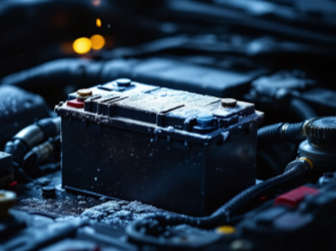When a nail or other sharp object penetrates a vehicle’s tyre it most often results in a slow puncture. There are three ways to repair your tyre: Either with a radial patch for bigger holes, plug repair for smaller holes or replace the tyre. Replacing the tyre is the much pricier option because you usually have to buy two tyres at a time – replacing only one tyre could offset the vehicle’s stability and balance. Our advice is to ensure you always have a tyre repair kit on hand.
The plug repair is the cheapest and easiest way to fix a tyre as the typical plug repair kit would cost you less than R100. The repair can be done without having to remove the tyre and it could be done in a few seconds. You can do it yourself without the help of a professional.
Is a plug repair reliable? It can be a reliable short-term solution if your tyre has a small hole – the plug repair kit will only help with holes that are 6mm in diameter or smaller. The plug repair kit is a small leather band coated in a thick sticky substance that expands once the tyre heats up.
How do you perform a plug repair?
- Step 1: Locate the tyre puncture by doing a full inspection over the tyre’s tread.
- Step 2: Pull out the nail or sharp object, and make sure the hole is small enough to allow the plug kit to work. (Smaller than 6mm.)
- Step 3: Use the round file-type tool that comes with your repair kit to create a rough texture on the inside of the tyre. This is essential for the plug to work properly.
- Step 4: For this step you will need the other tool which looks like a large needle. You will then need to get one of the sticky leather bands (plug) through the side of the tool until the band is centered through the plugging tool.
- Step 5: Lastly you will need to force the plugging tool with the leather band (plug) through the hole, you should stop when the plug is about 1cm out of the tyre. You will then have to pull out the plugging tool and the plug should stay behind in the tyre. After this you will need to pump your tyre to the recommended pressure, and then you should check if air is leaking out of your plug. If air is leaking out, we recommend that you get the tyre checked by a professional for assistance on repairing the tyre.
Get access to trusted service providers with MotorHappy. Did you know that a Service Plan through MotorHappy gives you access to qualified technicians who use genuine parts? While tyres aren’t covered in a Service Plan for MotorHappy other essential working parts are covered, such as filters, spark plugs, lubricants and more. In addition, we offer value-added services such as tyre change assistance, fuel run, jump-start and more.
The radial patch repair is known to be a safer and more reliable tyre repair option and can be used to repair a larger hole, up to 1cm in diameter. However, this repair can’t be done in just a few seconds and unfortunately needs the tyre to be removed from the wheel. The radial patch repair should be done by professionals because they will have the appropriate equipment for the repair.
So exactly how is this procedure done?
- Step 1: The wheel needs to be taken off the vehicle, then the tyre needs to be separated from the rim.
- Step 2: Inspect the tyre for the damaged area from the inside of the tyre and remove the nail/object from the tyre.
- Step 3: Apply the patch over the hole from the inside of the tyre. After this the patch should be left to settle for about 10 minutes.
- Step 4: At this point it’s time to re-join the tyre to the rim and pump up the tyre to the required pressure. If there are no air leaks after a short drive, the repair has been successful.
Remember that neither one of these repairs will be safe to use if the hole is closer then 2cm from the side wall of the tyre.
Do you suffer from car sickness?
Introducing the new Citroen C3 Max


